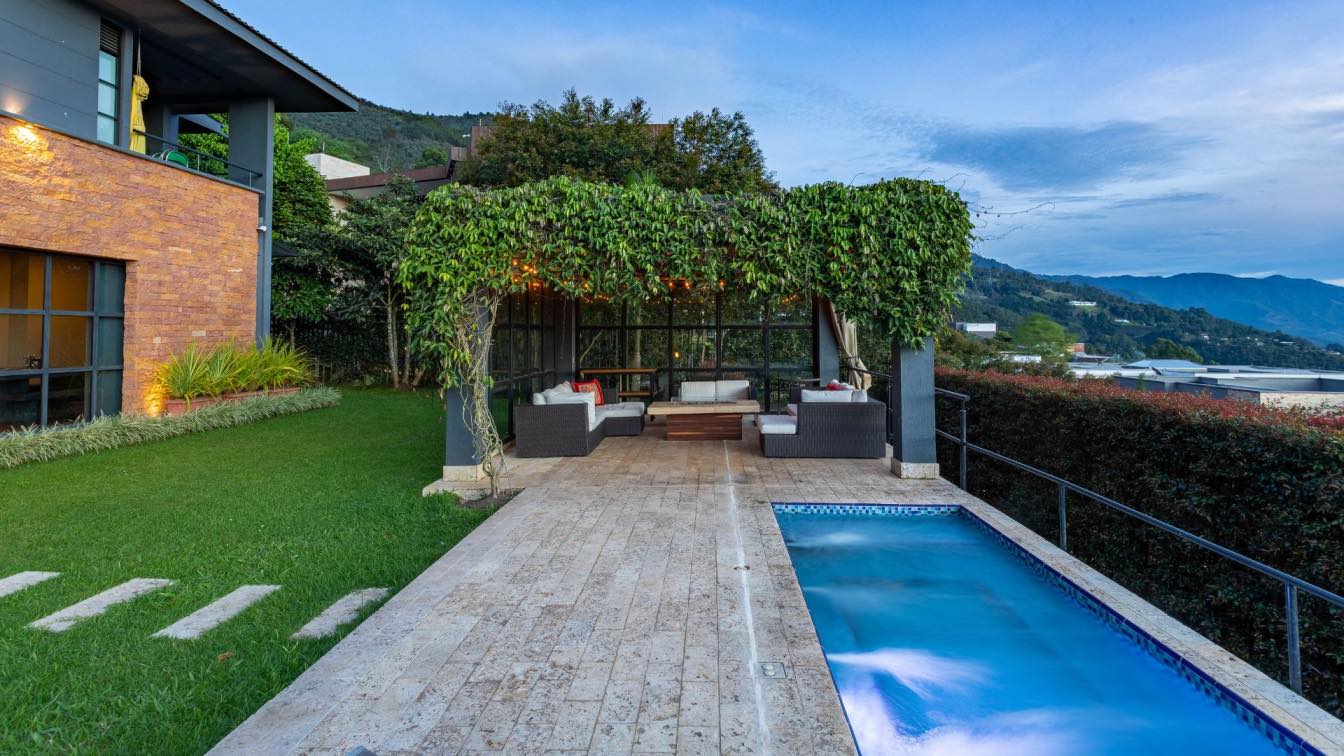Whether you're preparing for those sunny summer days or opening up a community pool, designing a safe swimming space is crucial. In comprehending the multi-faceted concept of pool safety, it cannot be pinpointed to a single element. Rather, it surrounds various components that work together to maintain a secure, risk-free environment. Physical aspects such as implementing pool barriers, using anti-slip surfaces and efficient lighting, adhering to safe pool depths, and ensuring a functional drainage system are some noteworthy considerations. From a daily use perspective, safe practices such as wearing aqua shoes, not running around the pool, never swimming alone, or being fully knowledgeable in swimming add another layer to safety.
Tip 1: Ensure Proper Pool Barriers
Pool barriers like fences and pool covers are imperative in maintaining safety. High-quality barriers can prevent unintentional slips, falls, and drowning incidents, especially when it comes to children. While purchasing a pool barrier, it's crucial to consider the guidelines and standards set by authorities. This involves adhering to the recommended measurements for pool barriers. For instance, barriers should be at least 4 feet high to prevent children from climbing over them. The space between the ground and the bottom of the barrier should not exceed 4 inches, ensuring that small children cannot slide underneath. Gates latching the barriers should be self-closing and self-latching.
Pool covers, often disregarded, play a significant role in maintaining safety when the pool is not in use. They should be sturdy enough to support a minimum weight of 485 lbs, the equivalent of two adults and a child, to allow for safe rescue operations if needed. More than just guidelines, these measurements and standards serve as a crucial benchmark for ensuring pool safety.
Tip 2: Implementing Anti-Slip Surfaces
One underestimated risk associated with pools is the hazard presented by slick surfaces. Rain splashed water, or even morning dew could potentially make the pool's surrounding areas treacherous, posing a risk of slips and falls. Therefore, an effective way to enhance overall pool safety is to include anti-slip surfaces. These surfaces come in an array of materials, each with their unique advantages.
1. Textured concrete: It is due to its rough properties, increases traction and reduces the risk of slipping. On top of its safety features, it allows for a range of designs and color combinations that can align with overall pool aesthetics;
2. Natural stone: Particularly unpolished variants, which create a high-friction surface providing excellent traction. It carries a natural look and blends well with outdoor environments. However, it requires diligent maintenance to prevent moss growth, which may defeat its anti-slip properties;
3. Certain types of rubber and plastic mats are explicitly designed to thwart slipping: They can be strategically placed in high-traffic areas or spots prone to water splashing, such as around the diving board or pool steps.
Tip 3: Choosing Aqua Shoes for Added Safety
While designing a pool with safety in mind is paramount, what you wear can also contribute significantly to personal safety. Aqua shoes play a crucial role in enhancing safety when navigating around the pool. Their principal role is ensuring safety in wet environments, effectively safeguarding users from potential slip-and-fall injuries commonly associated with such places. The superior grip provided by water shoes helps stabilize movement on wet, slippery surfaces, making them a practical essential for pool safety. In addition, they provide a protective layer against heat, abrasive surfaces, or any potentially harmful objects hidden underwater.
However, all swimming shoes are not created equal. You can select the right pair on https://threo.com.au/t/aqua-shoes/ to make a significant difference in personal safety. Prioritize features such as non-slip soles, comfortable fitting, and the durability of the material. Choose a pair that fits perfectly, ensuring they won't become loose while swimming or walking. Adding aqua shoes to your swimming gear is an extra step, but it brings substantial improvements in personal safety by the pool.
Tip 4: Proper Pool Lighting
Good lighting enhances visibility, making it easier for swimmers to see each other and any possible obstacles in and around the pool. This enhanced visibility is crucial, especially during nighttime swims, to prevent potential collisions or accidents within the pool area. There are multiple lighting options one could consider. Incandescent and halogen lights are traditional choices, known for their warm glow and relatively affordable cost. However, LED lights have grown in popularity due to their energy efficiency and a wider spectrum of color options, setting both the mood and ensuring visibility. Underwater lights are another key to enhancing the appeal and the safety of the pool. They illuminate the water, aiding swimmers in seeing the bottom of the pool clearly and making swimming at night safer.
Tip 5: Safe Pool Depths
Ranging from shallow to deep ends, pool depth should be deliberated carefully, considering not only the purpose of use but also the users themselves. Depth standards vary, however, for residential pools, the shallow end typically falls within the 3.5 to 4 feet range, which is ideal for younger or less experienced swimmers. The deep end commonly extends from 7.5 to 8.5 feet, better suited for experienced swimmers.
Despite these standards, it's crucial to factor in the pool's expected users while defining its depth, ensuring the safety of everyone. For instance, a pool primarily used by children may have a shallower depth than one designed for adults. On the other hand, a pool designed for varied use must have clear demarcations between shallow and deep areas, typically with safety markings or ropes.
Tip 6: Good Pool Drainage System
A functional pool drainage system is a silent worker in maintaining pool safety. Its primary role is to ensure proper circulation and filtration, effectively controlling the buildup of pollutants and biological threats such as bacteria and algae, which can possibly lead to skin infections or illnesses. Additionally, an efficient drainage system reduces the occurrence of standing water, and a slip and fall risk in the pool area.
To enhance pool safety through drainage, it's crucial to observe legal requirements set to protect users. Regulations mandate a dual-drain system, fundamentally designed to mitigate the risk of entrapment, a dangerous scenario where a swimmer can be held against the pool drain by its suction force. This can cause injury and in severe cases, can lead to drowning.
Tip 7: Install Safety Equipment
Including lifesaving equipment in your pool design should be a priority, not an afterthought. There's a range of safety equipment to take into consideration when ensuring a secure pool environment. Teaching rings, more commonly known as lifebuoys, should be readily accessible along the poolside. They serve the purpose of flotation support for distressed swimmers until help arrives. Rescue poles, equipped with a hook and often used in conjunction with lifebuoys, are fundamental for pulling individuals to safety. Tools such as first-aid kits and defibrillator machines can handle minor accidents or life-threatening situations, respectively.
In conclusion, pool safety begins in the design phase, with considerations such as installing proper barriers, implementing anti-slip surfaces, and setting appropriate pool depths. Additionally, effective lighting, a functional drainage system, and readily available lifesaving equipment all contribute to a safer pool environment. Not to mention, incorporating personal safety measures, such as wearing aqua shoes, enhances overall safety. It's imperative for pool owners to implement these factors not only to meet regulations but also to create a setting where fun and safety coexist.





